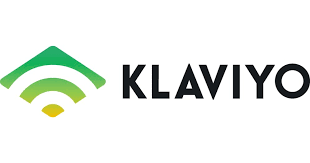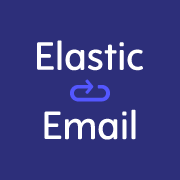Hey there, fellow marketers and entrepreneurs! If you’re on the hunt for the ultimate email marketing tool for 2024, you’re in the right place. Today, we’re diving deep into a showdown between two giants in the email marketing world: Klaviyo and Elastic Email. Both have their fan base, but when it comes down to it, which one will truly help your business soar? Whether you’re a startup looking to make a splash or a seasoned marketer aiming to revamp your strategy, this comparison is for you. Let’s jump in!
| Klaviyo | Elastic Email |
|---|---|
 |  |
| G2 Score – 4.6 out of 5 stars | G2 Score – 4.3 out of 5 stars |
| TrustRadius Score – 9.0 out of 10 | TrustRadius Score – 8.0 out of 10 |
Ease of Use: Navigating Klaviyo and Elastic Email
When it comes to email marketing tools, ease of use is a big deal. After all, who wants to spend hours figuring out how to send a simple campaign? We’ll compare Klaviyo and Elastic Email on their user-friendliness, because let’s face it, in the fast-paced world of digital marketing, time is gold.
Klaviyo’s User Experience
Starting with Klaviyo, it’s like walking into a high-tech, yet surprisingly welcoming, digital marketing lounge. Klaviyo prides itself on its sleek, intuitive interface. For beginners, this is a dream come true. You can set up your account in no time and start exploring its features without feeling overwhelmed.
One of the first things you’ll notice is the dashboard. It’s clean, well-organized, and gives you a quick snapshot of your campaign performance. Navigating through Klaviyo’s menu is a breeze. Whether you’re looking to create an email sequence, set up a sign-up form, or dive into audience segmentation, everything is just a few clicks away.
But what about the actual email creation process? Klaviyo shines here too. Their drag-and-drop email builder is a piece of cake to use. You can choose from a range of templates or build your own from scratch. The templates are not just pretty; they’re smart. They adapt to your brand style, making your emails look professional without needing a designer.
Elastic Email’s Approach to Simplicity
Moving over to Elastic Email, the experience is a bit different but equally intriguing. Elastic Email feels more like a practical workshop where everything you need is within arm’s reach. The setup process is straightforward, and you’ll find yourself sending out your first campaign pretty quickly.
Elastic Email’s dashboard is more utilitarian compared to Klaviyo’s. It focuses on functionality, giving you direct access to key features like campaign management, contact lists, and analytics. The design might not win any beauty contests, but it does the job efficiently.
When it comes to building emails, Elastic Email keeps it simple. The email editor is less flashy than Klaviyo’s but packs a punch in functionality. It offers a decent selection of templates, and the customization options are enough to create engaging emails. It might lack some of the advanced features of Klaviyo’s editor, but it makes up for it in straightforwardness.
The Verdict on User-Friendliness
So, who wins the ease of use battle? If you’re after a tool that combines aesthetic appeal with functionality, Klaviyo is your go-to. Its user interface is not just easy on the eyes; it’s also easy to navigate. For those who prefer a no-frills, straight-to-the-point tool, Elastic Email is your ally. It may not have the bells and whistles of Klaviyo’s design, but it gets the job done efficiently.
Both Klaviyo and Elastic Email offer smooth user experiences, but they cater to different preferences. Klaviyo is all about a blend of style and substance, while Elastic Email focuses on simplicity and functionality.
Feature Set: Klaviyo vs Elastic Email
Now, let’s talk about what these platforms can do for you. After all, a pretty interface is nice, but the real deal is in the features. We’ll examine what Klaviyo and Elastic Email bring to the table in terms of functionality and how these features can turbocharge your email marketing campaigns.
Klaviyo’s Feature Arsenal
Klaviyo is like a Swiss Army knife of email marketing – it’s packed with features. One of its standout features is segmentation. Klaviyo allows you to slice and dice your email list in ways that can make a data scientist giddy. You can segment based on purchase history, browsing behavior, email engagement, and more. This means you can send highly targeted emails that speak directly to the customer’s needs and interests.
Another area where Klaviyo excels is automation. Their automation workflows are incredibly versatile, allowing you to set up complex email sequences based on triggers and actions. Whether it’s a welcome series for new subscribers or a re-engagement campaign for dormant customers, Klaviyo makes it easy to automate with precision.
Klaviyo also offers robust analytics. You’re not just getting basic open and click rates; Klaviyo provides deep insights into how your campaigns are driving actual sales. This level of detail is a game-changer for e-commerce businesses looking to maximize their email ROI.
Elastic Email’s Feature Focus
Elastic Email, on the other hand, takes a more focused approach. It may not have the breadth of features that Klaviyo boasts, but it has depth in the areas it covers. One of its standout features is deliverability. Elastic Email has built a strong reputation for ensuring emails land in the inbox, not the spam folder. This is crucial because even the most beautifully crafted email is useless if it’s not seen.
Another strong point for Elastic Email is its API and integrations. If you’re tech-savvy and love tinkering with APIs, Elastic Email is a playground. It integrates smoothly with various platforms and allows for extensive customization through its API. This is particularly appealing for businesses with specific needs that require a more hands-on approach.
Elastic Email also shines in its pricing model, which is based on email volume rather than list size. This can be a more cost-effective option, especially for businesses that send emails to large lists infrequently.
Comparing Features: Who Takes the Lead?
Klaviyo is the winner if you’re looking for an all-in-one solution brimming with features. Its advanced segmentation, detailed analytics, and powerful automation capabilities make it a powerhouse for businesses that want to get deep into the weeds of email marketing.
Elastic Email, however, is the go-to for those who prioritize deliverability, API flexibility, and a more budget-friendly pricing structure. It’s perfect for businesses that need a reliable, no-nonsense tool that integrates seamlessly with their existing tech stack.
In summary, when it comes to features, Klaviyo and Elastic Email cater to different needs. Klaviyo is about depth and breadth, offering a wide range of advanced features. Elastic Email focuses on doing a few things exceptionally well, particularly in deliverability and integration capabilities.
Customer Support and Resources: Navigating the Support Landscape
An often overlooked but crucial aspect of choosing an email marketing tool is the support and resources available. No matter how intuitive a tool might be, there will be times when you need a helping hand. Let’s see how Klaviyo and Elastic Email stack up in this domain.
Klaviyo’s Approach to Customer Support
Klaviyo takes customer support seriously. They offer a variety of support options designed to cater to different needs. If you’re someone who likes to figure things out independently, Klaviyo has a comprehensive knowledge base filled with articles, guides, and tutorials. Their resources are detailed and cover everything from basic setup to advanced strategies.
For more personalized support, Klaviyo offers email and chat support. The response times are generally quick, and the support team is knowledgeable and helpful. What sets Klaviyo apart is their community forum. It’s a vibrant space where you can connect with other Klaviyo users, share experiences, and learn from each other. This peer-to-peer support adds an extra layer of value, especially when you’re looking for real-world advice and best practices.
Klaviyo also offers webinars and training sessions for those who prefer a more structured learning approach. These sessions cover a range of topics and are great for both beginners and experienced users looking to sharpen their skills.
Elastic Email’s Support System
Elastic Email, on the other hand, has a more straightforward approach to support. They offer a solid knowledge base with articles and guides that are clear and to the point. For direct support, Elastic Email provides email and chat options. The support team is efficient and knowledgeable, with a reputation for being responsive.
While Elastic Email doesn’t have a community forum like Klaviyo, they do offer a blog with useful articles and tips. These posts are not just about using Elastic Email; they also cover broader topics in email marketing, which can be quite insightful.
One area where Elastic Email really stands out is in their responsiveness to technical queries, especially for users who utilize their API. This makes them a great choice for businesses with custom integration needs.
Weighing Support and Resources
When it comes to customer support and resources, Klaviyo appears to have a slight edge due to its diverse range of support options and the added benefit of a community forum. The availability of webinars and training sessions is a big plus for those who appreciate learning in a more structured environment.
Elastic Email, while more limited in its support offerings, excels in responsiveness and technical support, especially for API-related queries. Their blog is a valuable resource for practical email marketing advice.
Both Klaviyo and Elastic Email provide solid support and resources, but they do so in different ways. Klaviyo offers a more varied support ecosystem, ideal for those who value community interaction and diverse learning resources. Elastic Email, while simpler in its approach, is robust in its technical support and efficiency, making it a reliable choice for more tech-oriented users.

Related: Check out our free SEO suite

Integration Capabilities: Connecting Your Tools
In the digital marketing world, the ability to integrate your email marketing tool with other software is a game-changer. It’s all about creating a seamless flow between your various marketing and business tools. Let’s compare how Klaviyo and Elastic Email fare in terms of integration capabilities.
Klaviyo’s Integration Ecosystem
Klaviyo positions itself as a central hub for your marketing efforts, offering a wide array of integration options. It seamlessly connects with popular e-commerce platforms like Shopify, Magento, and WooCommerce. This integration is a big deal if you’re in e-commerce, as it allows you to leverage customer purchase data to create highly targeted marketing campaigns.
Beyond e-commerce, Klaviyo integrates with a variety of other tools, including CRM systems, social media platforms, and even other marketing tools. This extensive integration capability makes it an excellent choice for businesses looking to centralize their marketing efforts and data.
One of the standout features of Klaviyo’s integrations is the depth of data synchronization. It’s not just about connecting systems; Klaviyo ensures that valuable customer data flows smoothly between platforms. This enables more personalized and effective marketing strategies.
Elastic Email’s Integration Approach
Elastic Email also offers a range of integration options, though not as extensive as Klaviyo’s. It covers the basics by integrating with popular CMS and e-commerce platforms. This makes it a viable option for businesses that need a straightforward email marketing tool that plays well with their existing setup.
Where Elastic Email really shines is in its API. It offers a robust API that allows for deep customization and integration. If you have the technical know-how or resources, you can tailor Elastic Email to fit into virtually any system. This is particularly appealing for businesses with specific needs or those who rely heavily on custom-built software.
Integration Capabilities: A Side-by-Side Look
When comparing the integration capabilities of Klaviyo and Elastic Email, it’s clear that Klaviyo takes the lead in terms of the breadth and depth of integrations. Its ability to integrate deeply with a wide range of platforms, especially in the e-commerce space, makes it a powerhouse for businesses that rely on a diverse set of tools and platforms.
Elastic Email, while more limited in the range of direct integrations, offers a powerful API for custom solutions. This makes it an attractive choice for businesses with specific integration needs or those who have the technical capability to leverage a robust API.
In summary, Klaviyo is the go-to for businesses looking for an extensive range of ready-made integrations and seamless data flow across platforms. Elastic Email is ideal for those who require or prefer a custom integration approach, offering flexibility through its powerful API.
Pricing and Value for Money: Klaviyo vs Elastic Email
Let’s talk about one of the most critical factors in any business decision: the cost. How do Klaviyo and Elastic Email stack up in terms of pricing, and more importantly, what value do they offer for the price? We’ll break down their pricing structures and evaluate their value proposition.
| Klaviyo | Free Plan: Allows up to 250 contacts and 500 email sends, with Klaviyo branding on emails. Email Plans: Pricing starts based on the number of contacts. For example, for up to 500 contacts, the cost is around $20 per month. Includes email and SMS capabilities, segmentation, and automation. Pricing scales with the number of contacts. SMS and Email Combined Plans: Offers combined packages for businesses that want to use both email and SMS marketing. Pricing is based on the number of contacts and SMS messages sent. |
| Elastic Email | Unlimited Email Plan: Offers unlimited email sends per month. Pricing starts at $15/month for up to 5,000 contacts, with increasing rates for more contacts. Pay as You Go Plan: Charges based on the volume of emails sent. Starts at $0.09 per 1,000 emails, with the price decreasing for higher volumes. Email API Plan: Tailored for developers and high-volume senders. Offers robust API with detailed reporting. Pricing is based on volume and specific requirements. |
Klaviyo’s Pricing Structure
Klaviyo’s pricing is based on the number of contacts in your email list and the number of SMS messages sent. This tiered pricing model means that as your list grows, so does your cost. For small businesses just starting out, this can be quite affordable. However, as your business scales and your list expands, the cost can increase significantly.
What do you get for this price? Klaviyo offers a comprehensive set of features, even at the lower tiers. This includes their advanced segmentation, automation workflows, and detailed analytics. The value here is in the depth and breadth of features that Klaviyo offers, which can significantly boost your email marketing ROI, especially if you’re heavily into e-commerce.
Elastic Email’s Pricing Approach
Elastic Email adopts a different pricing model. They charge based on the number of emails sent, not the size of your contact list. This can be a more cost-effective option for businesses that have a large list but don’t send emails very frequently. Elastic Email’s pricing is transparent, with no hidden fees, making it easy for businesses to predict their email marketing costs.
In terms of features, while Elastic Email might not offer as many advanced features as Klaviyo, it covers all the essentials. This includes reliable deliverability, a user-friendly interface, and sufficient customization options. For businesses looking for a straightforward, no-frills email marketing solution, Elastic Email provides good value for money.
Evaluating Pricing and Value
When it comes to pricing, the better choice depends largely on your specific business needs and how you plan to use the tool. Klaviyo, with its feature-rich platform, can offer high value to businesses that will utilize its advanced capabilities, especially in segmentation and automation. However, for smaller businesses or those with tighter budgets, the escalating cost as your list grows can be a concern.
Elastic Email, on the other hand, is more budget-friendly, especially for businesses with larger contact lists but lower email sending frequencies. Its straightforward pricing and solid feature set make it a great option for those who need a reliable, efficient email marketing tool without the bells and whistles.
Klaviyo offers a high-value proposition for businesses looking to leverage advanced email marketing features, with the cost scaling with your list size. Elastic Email provides a more cost-effective solution for those with larger lists who send emails less frequently, offering all the essential features at a transparent, predictable price.
Reporting and Analytics: Measuring Success with Klaviyo and Elastic Email
In the world of email marketing, data is king. The ability to track, analyze, and act on email campaign data can make a huge difference in your marketing strategy. Let’s delve into how Klaviyo and Elastic Email handle reporting and analytics.
Klaviyo’s Analytical Strengths
Klaviyo is like a data scientist in your pocket. It provides extensive reporting and analytics capabilities that go beyond basic metrics like open rates and click-through rates. Klaviyo allows you to dive deep into the performance of your campaigns with metrics like revenue per recipient, lifetime value of customers, and how your emails contribute to your sales funnel.
What sets Klaviyo apart is its ability to connect email performance with actual sales data, particularly for e-commerce businesses. This connection provides invaluable insights into how your email campaigns are directly impacting your bottom line. Klaviyo also offers A/B testing tools, allowing you to test different aspects of your emails to see what works best with your audience.
Additionally, Klaviyo’s analytics are presented in a user-friendly dashboard, making it easy to interpret your data and make informed decisions. The level of detail in Klaviyo’s reporting is ideal for businesses that are data-driven and focused on maximizing the ROI of their email campaigns.
Elastic Email’s Reporting Approach
Elastic Email, while not as robust as Klaviyo in analytics, still offers a solid suite of reporting tools. It covers all the basics – open rates, click-through rates, bounces, and unsubscribes. This data is presented in a clear, straightforward manner, making it easy for businesses to get a quick overview of their campaign performance.
Where Elastic Email stands out is in its deliverability reports. It provides detailed insights into how your emails are performing in terms of reaching the inbox. This focus on deliverability analytics is crucial for businesses that prioritize getting their messages seen by their audience.
Though Elastic Email might not offer the depth of analytical tools that Klaviyo does, it provides enough data for businesses to effectively track and optimize their email campaigns. Its simplicity in reporting can be a plus for businesses that prefer a more straightforward approach to email analytics.
Comparing Reporting and Analytics
In the realm of reporting and analytics, Klaviyo takes the lead with its comprehensive, detailed approach. It’s the better choice for businesses that rely heavily on data to drive their marketing strategies. The ability to track email performance down to the dollar value is a significant advantage.
Elastic Email offers a more basic, but still effective, approach to analytics. It’s well-suited for businesses that need fundamental reporting capabilities and a strong emphasis on deliverability metrics.
In summary, Klaviyo offers a more advanced and detailed analytical experience, ideal for data-driven businesses, especially in the e-commerce sector. Elastic Email provides essential analytics with an emphasis on deliverability, suitable for businesses that value simplicity and clear insights into email performance.
Conclusion
As we wrap up our deep dive into Klaviyo and Elastic Email, it’s clear that both platforms have their unique strengths and cater to different needs. Klaviyo stands out as a comprehensive, feature-rich tool perfect for businesses, particularly in e-commerce, that seek advanced capabilities in segmentation, automation, and detailed analytics. Its integration with various platforms and deep data insights make it a powerhouse for data-driven marketing strategies. However, this comes at a cost that scales with your business growth.
On the other hand, Elastic Email offers a more straightforward, cost-effective solution. Its strength lies in reliable deliverability, a user-friendly interface, and a robust API for custom integrations. It’s an ideal choice for businesses looking for an efficient, no-frills email marketing tool, especially those with larger contact lists who send emails less frequently.
Ultimately, the choice between Klaviyo and Elastic Email boils down to your specific business needs, budget, and how you plan to use the tool. Klaviyo is the go-to for in-depth, advanced marketing tactics, while Elastic Email is your ally for straightforward, effective email campaigns at a predictable cost. Both platforms offer valuable features and can significantly boost your email marketing efforts. The decision is yours, based on what aligns best with your business goals and resources in 2024. Choose wisely, and may your email campaigns thrive!
Read Next:
- GetResponse vs ActiveCampaign: The Best Email Marketing Tool for 2024
- GetResponse vs AWeber:The Best Email Marketing Tool for 2024
- The Importance of Deliverability in Email Marketing: Ensuring Your Messages Reach the Inbox
- Email Marketing for Events and Webinars: Boosting Attendance and Engagement
- The Role of Mobile Optimization in Email Marketing Success





















